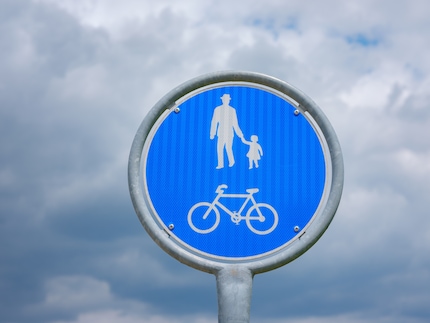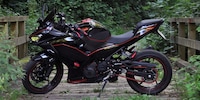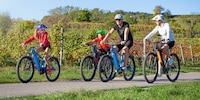
Background information
E-scooters: what’s legal – and what isn’t
by Lorenz Keller

New rules surrounding «light motorcycles» are set to come into force on 1 July 2025. If your electric motor scooter has two seats, you’ll officially be allowed to carry a passenger – and ride at speeds of up to 25 km/h. However, the changes won’t apply to electric kick scooters.
As novel modes of transport, e-scooters and electric motor scooters are having a hard time of it. The sharp increase in two-wheeled vehicles with electric motors on the roads is causing problems and sparking criticism. You don’t need to look much further than the comments under my last e-scooter article as proof of that.
Not only do riders lack familiarity with the rules of the road, but many of their critics do too. In Switzerland, electronic kick scooters are assigned to the same vehicle category as e-bikes, giving riders the same rights and obligations. They’re also governed by the same traffic rules as conventional pushbikes.
When new vehicles hit the roads, laws need to be updated. That’s why the Swiss Federal Council is bringing in new legislation that’ll come into force on 1 July 2025 (page in German). Here are the key aspects of the regulations:
A maximum speed limit of 25 km/h will now apply to the «light motorcycles» category, which includes e-bikes, cargo bikes and electric motor scooters. E-scooters, i.e. electric kick scooters with no seats, are explicitly excluded from this.
The changes will mostly affect electric motor scooters, which resemble Vespas or motorcycles. If you have one of these, you’ll be able to ride it at speeds of up to 25 km/h, whereas the previous limit was just 20 km/h.
Still can’t picture which vehicles I mean? Here are some examples of electric motor scooters in the «light motorcycles» category:
Side note: regulations now explicitly mention that the bike symbol on road signs applies to «light motorcycles» throughout Switzerland. So if you’re riding an e-scooter, you have to use designated cycle paths if they’re available. On the flip side, critics have to accept that yes, e-scooters are allowed to travel through areas clearly marked for bikes.
What hasn’t changed is that the motor of a «light motorcycle» may have a maximum continuous output of 500 watts. The vehicle may weigh a maximum of 250 kilogrammes.

Another new regulation coming into force on 1 July will apply to «light motorcycles» with seats. It stipulates that these vehicles are permitted to have two occupied seats and two additional protected child seats. Cargo bikes, for instance, may even have one rider’s seat and four protected child seats.
Again, this rule change will mainly affect electric motor scooters. Though these vehicles often have two seats, regulations previously only allowed one rider. E-scooters are also explicitly excluded from this. If you have to stand up to use the scooter, you won’t be allowed to have someone else ride with you.
The age limits governing «light motorcycles» won’t be changing. You can ride one from the age of 16 without a driving licence or from age 14 with a category M (moped licence). A key thing to bear in mind is that you can only have a passenger ride with you on your second seat if you’re over 16. As is the case with bicycles, wearing a helmet isn’t mandatory.
Commercial trikes used for transporting goods and passengers previously had to be registered as «small motorcycles». These are now being recategorised as «heavy motorcycles». With a 2000-watt motor, they’re permitted to travel at a maximum speed of 25 km/h and weigh up to 450 kilogrammes.
Vehicles such as cargo trikes and electric rickshaws require a licence, but can be tested in groups. In other words, there’s a database of tested models that can get a licence plate without huge amounts of admin.
If you’re operating a vehicle categorised as a «heavy motorcycle», you’re obliged to observe the same traffic rules as cyclists. The same applies to riders of «fast motorcycles», a category that includes e-bikes reaching speeds up to 45 km/h and classic mopeds with either a combustion engine or an electric motor achieving speeds up to 30 km/h.
Until now, large and fast motorcycles had to use a cycle lane if one was available. Exceptions to the rule may now appear on signs. If signalled, these vehicles will be allowed to ride on the road, leaving more space in the cycle lane for lighter, slower two-wheeled vehicles.
These new regulations for slow-moving vehicles have stuck to the principle of liberal law-making. Switzerland imposes few restrictions, with many things remaining permitted. The wishes of numerous police forces, such as compulsory insurance, mandatory helmets or type approval, have so far gone unheard.
Switzerland’s legal landscape will also remain different to that of neighbouring countries. Elsewhere, there are different speed limits, such as 25 km/h for e-scooters.
Switzerland leaves many things to riders’ discretion. If you’re buying a vehicle, you need to make sure you choose a model that’s adapted for Switzerland. It’s up to you whether you wear a helmet. Adults also have an obligation not to let children ride e-bikes and e-scooters.
Gadgets are my passion - whether you need them for the home office, for the household, for sport and pleasure or for the smart home. Or, of course, for the big hobby next to the family, namely fishing.
Interesting facts about products, behind-the-scenes looks at manufacturers and deep-dives on interesting people.
Show all
Background information
by Dominik Bärlocher

Opinion
by Michael Restin

Background information
by Martin Jungfer